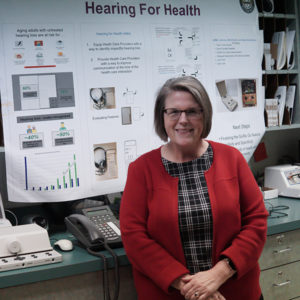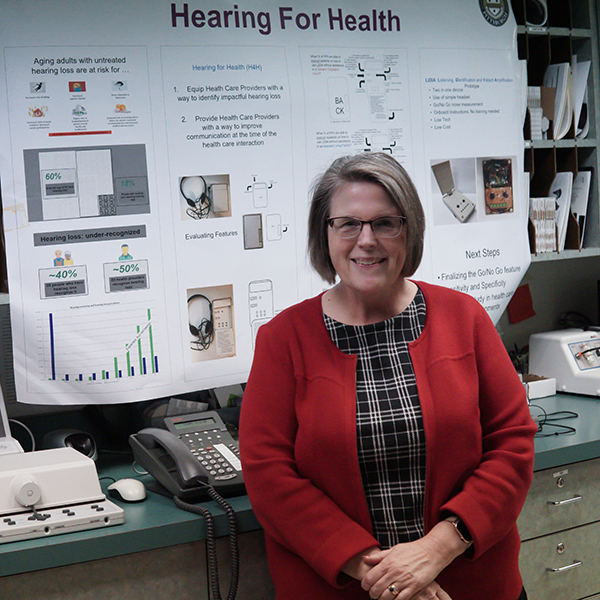“Blindness separates us from things, but deafness separates us from people.” —Helen Keller

These words, spoken so many years ago, unfortunately still hold true for millions of people with untreated hearing loss around the world. While more and more health care systems and insurers are interested in social participation as it is linked to health outcomes and specifically successful aging, scientists and physicians at the University of Pittsburgh School of Medicine, led by Catherine Palmer, PhD, are working diligently to solve the puzzle of hearing loss and its connection to social isolation.
Social Participation and Health
Social participation has long been talked about as an important factor in a person’s health, especially as it pertains to aging populations. A study in 2010 reported on 308,849 individuals who were followed for at least 7.5 years. They found that those with social relationships have a 50% greater likelihood of survival, which is comparable with quitting smoking and exceeds other risk factors for mortality such as obesity or physical inactivity.
“This type of data makes a compelling argument for modifying what we can to make social participation possible,” says Dr. Palmer, Associate Professor in the Departments of Otolaryngology and Communication Science and Disorders and the Director of Audiology for UPMC. “Treating hearing loss is one of those things that would be considered “low hanging fruit” in terms of things we could change in health care policy and patient care that would be cost-effective.”
How Hearing Loss Affects Us Socially
An individual with untreated hearing loss does one of two things in social situations – they either expend a far greater amount of effort to understand the distorted auditory signal they receive, or they withdraw from the interaction. If they choose effort, they are using cognitive resources to fill in the “blanks” in the spoken signal. This takes away from cognitive resources needed to keep up with the conversation, respond quickly, etc. Either approach (extra effort or withdrawal) negatively impacts the individual’s success in social participation. This person or the people who are trying to interact with him/her will get frustrated and reduce interactions. This creates a vicious cycle that can lead to loneliness and depression.
“When we successfully fit hearing aids on an older person they do not come in a few weeks later and say they hear better,” says Dr. Palmer. “They come in and tell us all the things they are doing that they used to do and didn’t think they could do any more like book club, coffee with friends, phone calls with family, bridge games, etc…”
Solving the Hearing Loss Puzzle
With funding support from the Hearst Foundation, Dr. Palmer and her team completed a pilot study in a senior living community in Pittsburgh to see how they could help improve communication for the residents. Using group amplification systems, simple low-cost amplifiers, and implementing communication strategies, researchers found that satisfaction with social participation increased for all residents, regardless of whether they had hearing loss or not. The challenge is developing cost-effective programs that provide this care on an ongoing basis in Senior Living facilities.
“Another person’s hearing loss can socially isolate the people they interact with, try to watch television with or play bingo with someone who isn’t hearing well, it can be very frustrating” states Dr. Palmer. “It’s about communicating and participating. An appropriate hearing aid fitting brings them back in touch with or allows them to join a social circle; it changes lives.”
This type of innovative research is only possible with support from generous donors to the Eye & Ear Foundation. If you’d like to be a part of this groundbreaking work being done, please consider making a gift to help support our research.
For the latest news on advances in the treatment of hearing loss, subscribe to EEF’s Monthly Newsletter.
